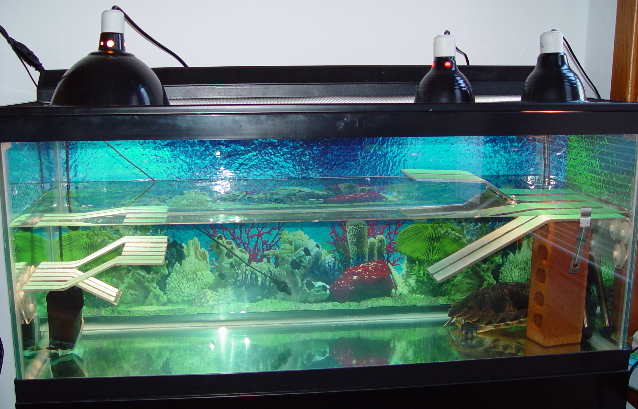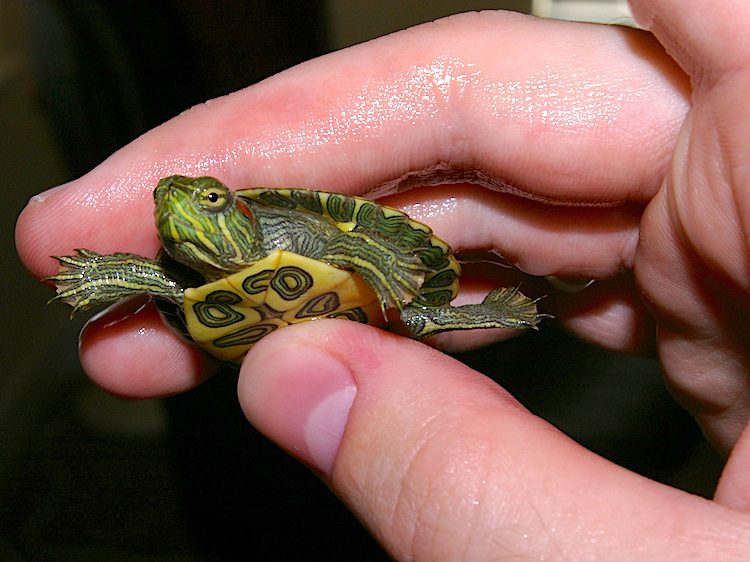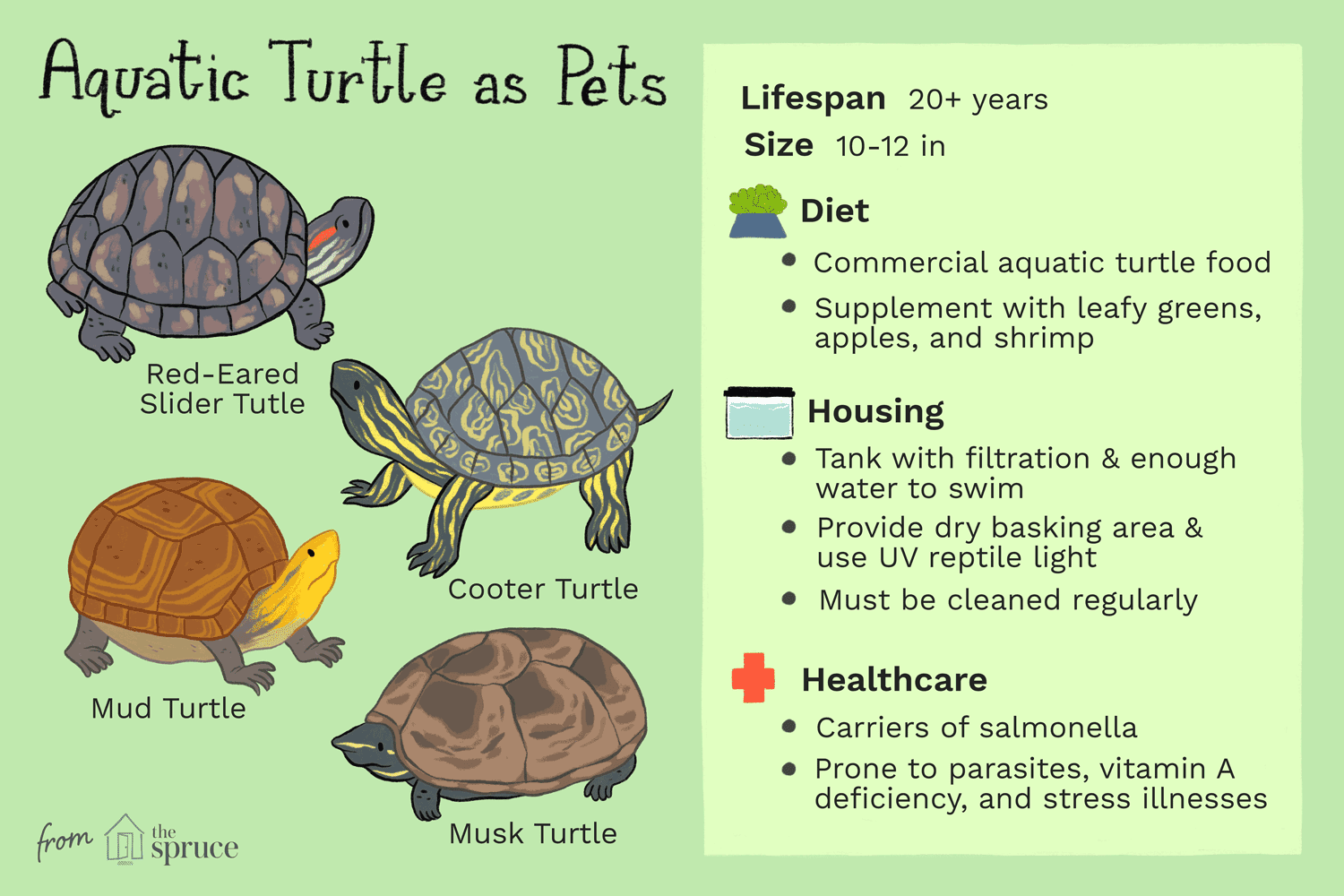To care for aquatic turtles, provide a spacious tank, clean water, proper lighting, and a balanced diet. Creating a comfortable habitat is crucial for their well-being.
Additionally, regular health check-ups and monitoring are essential for their overall health. Proper care and attention will ensure that your aquatic turtles thrive in their environment and live a long, healthy life. Understanding their specific needs and requirements will help you create a suitable environment that promotes their well-being and happiness.
By following these guidelines, you can provide the best care for your aquatic turtles and enjoy their companionship for years to come.

Credit: www.exoticpetvet.com
Choosing The Right Habitat
Aquatic turtles require a suitable habitat to thrive. Creating the perfect environment for your aquatic turtles is crucial for their well-being and longevity.
Tank Size
- Choose a tank size based on the size of your turtle.
- Provide at least 10 gallons of water per inch of shell length.
- Ensure the tank is spacious enough for swimming and basking.
Substrate And Land Area
- Use a substrate that is safe for aquatic turtles, such as river rocks or smooth gravel.
- Include a land area for your turtle to climb out of the water and bask under a heat lamp.
- Ensure the land area is easily accessible from the water.
Maintaining Water Quality
To care for aquatic turtles, maintaining water quality is crucial. Regularly cleaning the tank, using a filtration system, and monitoring water temperature and pH levels are essential. Providing clean, dechlorinated water and ensuring proper basking areas will contribute to the overall health and well-being of your aquatic turtles.
Maintaining water quality is crucial for the health of aquatic turtles. Poor water quality can lead to a variety of health problems, including respiratory infections, shell rot, and other diseases. To ensure your turtle is healthy, it’s important to maintain proper water quality by using a filtration system, monitoring water temperature and pH levels.Filtration System
A good filtration system is essential for maintaining water quality. There are several types of filtration systems available, including mechanical, biological, and chemical filters. Mechanical filters remove debris and waste from the water, while biological filters help to break down harmful chemicals and toxins. Chemical filters can be used to remove chlorine or other chemicals from tap water.Water Temperature And Ph Levels
Water temperature and pH levels are also important factors to consider when caring for aquatic turtles. The ideal water temperature for most species of turtles is between 75 and 80 degrees Fahrenheit. It’s important to monitor the water temperature regularly to ensure it stays within this range. The pH level of the water should be between 6.5 and 8.5. If the pH level is too high or too low, it can cause stress and health problems for your turtle. To maintain the correct pH level, you can use a pH testing kit to check the water regularly and make adjustments as needed. In conclusion, maintaining proper water quality is essential for the health and well-being of your aquatic turtle. By using a good filtration system and monitoring water temperature and pH levels, you can help ensure your turtle stays healthy and happy for years to come.Feeding And Nutrition
Aquatic turtles are fascinating pets that require proper care and attention, especially when it comes to their feeding and nutrition. Providing the right diet is essential for their overall health and well-being. In this section, we will explore the dietary requirements, supplements, and treats that are crucial for the proper nutrition of aquatic turtles.
Dietary Requirements
Aquatic turtles have specific dietary needs to thrive. Their diet should primarily consist of commercial turtle pellets that are specifically formulated for their species. These pellets are enriched with essential nutrients and vitamins, providing a well-balanced diet. Alongside pellets, turtles also require a variety of fresh foods such as leafy greens (e.g., kale, collard greens, and spinach), vegetables (e.g., carrots, squash, and bell peppers), and protein sources like insects and small fish.
Supplements And Treats
Supplements play a crucial role in ensuring that aquatic turtles receive all the necessary vitamins and minerals. Calcium and multivitamin supplements are particularly important for maintaining their bone health and overall immune system. Treats, such as small pieces of fruit (e.g., strawberries and bananas), should be offered occasionally as a source of enrichment and variation in their diet. However, these should be provided in moderation to prevent an imbalance in their nutritional intake.

Credit: www.youtube.com
Uvb Lighting And Heating
UVB lighting and heating are crucial aspects of caring for aquatic turtles. Proper UVB lighting and basking area temperature are essential for the health and well-being of your pet turtle. In this section, we will discuss the importance of UVB lighting and how to ensure the basking area temperature is suitable for your aquatic turtle’s needs.
Uvb Lighting
Aquatic turtles require UVB lighting to aid in the synthesis of vitamin D3, which is essential for calcium metabolism and overall shell health. When setting up the turtle’s habitat, it’s important to provide a UVB light specifically designed for reptiles. Position the light over the basking area, ensuring it covers the entire area where the turtle will bask.
Basking Area Temperature
The basking area temperature is critical for your turtle’s health. It should be maintained between 85-90°F (29-32°C) to allow the turtle to regulate its body temperature effectively. To achieve this, use a basking lamp or ceramic heat emitter to create a warm spot where the turtle can bask and regulate its body temperature. Regularly monitor the temperature to ensure it remains within the optimal range for your turtle’s species.
Handling And Interaction
Handling and interaction are crucial aspects of caring for aquatic turtles. Proper techniques and socialization play a significant role in the overall well-being of these fascinating reptiles. By understanding how to handle and interact with aquatic turtles, you can ensure their health and happiness.
Proper Handling Techniques
When handling aquatic turtles, it’s essential to do so with care and gentleness. Always approach them calmly and avoid sudden movements to prevent stress. Support their body properly, ensuring that they feel secure and comfortable during handling. Make sure to wash your hands before and after handling to maintain hygiene and prevent the spread of any potential diseases.
Socialization And Enrichment
Socialization and enrichment activities are vital for the mental and emotional well-being of aquatic turtles. Providing a stimulating environment with hiding spots, basking areas, and varied terrain can help keep them engaged and active. Interacting with them by offering food by hand and observing their behavior can also promote socialization and a deeper bond with your pet.
Health And Veterinary Care
When it comes to caring for aquatic turtles, ensuring their health and providing proper veterinary care is crucial. Aquatic turtles, like all pets, require regular attention to their well-being to ensure they live long and healthy lives. Health and veterinary care for aquatic turtles involve understanding common health issues and the importance of regular vet check-ups.
Common Health Issues
Aquatic turtles are susceptible to a range of health issues, some of which can be prevented with proper care. Common health issues include shell infections, respiratory infections, and vitamin deficiencies. It’s essential to monitor your turtle for any signs of illness and address any concerns promptly.
Regular Vet Check-ups
Regular vet check-ups are essential for the overall health and well-being of aquatic turtles. A qualified reptile veterinarian can provide thorough examinations, offer dietary advice, and administer any necessary vaccinations. These check-ups also allow for early detection and treatment of any health issues, ensuring your turtle stays healthy.
Behavior And Enrichment
Enhancing aquatic turtles’ environment is crucial for their well-being. Providing proper enrichment through varied habitats, basking spots, and toys promotes natural behaviors and mental stimulation. By mimicking their natural habitat, you can ensure your aquatic turtles lead a healthy and fulfilling life.
Aquatic turtles are fascinating creatures that require proper care to thrive. Understanding their behavior and providing enrichment activities can help keep them healthy and happy. In this article, we’ll explore the importance of behavior and enrichment for aquatic turtles.Understanding Behavior
Aquatic turtles have unique behaviors that are important to understand. For example, they are social creatures that thrive in the company of other turtles. They also need access to both land and water to regulate their body temperature and maintain their health. One important behavior to watch for is basking. Basking is when a turtle spends time out of the water, soaking up the heat and UV rays from a heat lamp or natural sunlight. This is important for their overall health and wellbeing, as it helps them digest their food and absorb calcium. Another behavior to be aware of is aggression. Some turtles can be aggressive towards each other, especially during feeding time. If you notice any signs of aggression, it may be necessary to separate your turtles during feeding or provide multiple feeding stations to prevent competition.Enrichment Activities
Enrichment activities are important for aquatic turtles, as they can prevent boredom and promote natural behaviors. Some examples of enrichment activities include:- Providing hiding places and basking spots
- Offering a variety of food items, such as live insects or aquatic plants
- Introducing toys, such as floating objects or mirrors
- Creating a natural environment with rocks, plants, and other decorations

Credit: www.petful.com
Legal Considerations
Legal Considerations:
Regulations On Turtle Ownership
Aquatic turtles are protected under various regulations to ensure their well-being in captivity.
It is important to understand the rules set forth by your local authorities regarding turtle ownership.
Permits And Licenses
Obtaining the necessary permits and licenses is crucial before bringing an aquatic turtle into your home.
Contact your local wildlife agency to inquire about the specific requirements in your area.
Conclusion
In caring for aquatic turtles, prioritize clean water, proper diet, and suitable habitat. Regular vet check-ups are essential. Remember, turtles require commitment and attention. By following these guidelines, your aquatic turtles can thrive and live a healthy, happy life. Happy turtle keeping!






Leave a Reply